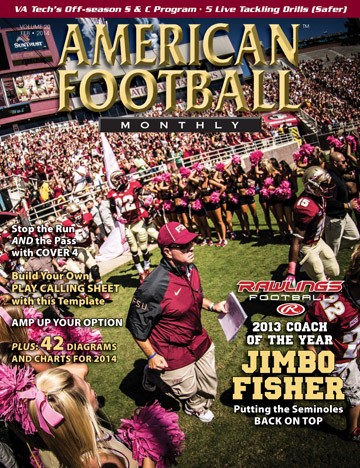Article CategoriesAFM Magazine
|
Safety First: Modify With Careby: AFM Editorial Staff© More from this issue With the increased concern over concussions in recent years, there’s also been an increase in new products related to concussion prevention and detection. Some of these products, such as supplemental padding devices or impact sensors, are designed to be added to or integrated into helmets. While the intention – providing an extra level of protection to players – is worthy, there’s a serious risk associated with any helmet modification that should be addressed before any modifications are made. That’s the possibility of a helmet losing its certification. Helmets are certified by individual helmet manufacturers based on strict guidelines and requirements provided by the National Operating Committee on Standards for Athletic Equipment, or NOCSAE, which is an independent and nonprofit standard-setting body with the sole mission to enhance athletic safety through scientific research and the creation of performance standards for protective equipment. The certification process, which involves laboratory testing conducted by manufacturers using NOCSAE guidelines, ensures that every helmet sold meets certain standards. When you tinker with your car or your television and make alterations that you think will increase performance, you run the risk of voiding the manufacturer’s warranty. It’s a similar situation with helmets – any alterations or modifications, with the exception of color or graphics, made to the original configuration of a helmet requires the modified helmet to have its own certification. This doesn’t mean that any product added to a helmet will automatically cause the helmet to lose its certification. What it does mean, according to NOCSAE, is that the original helmet manufacturer could void its certification or, if it wishes, conduct its own testing to determine if the added product affects the performance of the helmet. Either way, it’s up to the helmet manufacturer to certify any helmets that have been altered or modified after they were sold in their original condition. If a helmet’s certification is voided or withdrawn, it cannot be used. Michael Oliver, who is Executive Director of NOCSAE, helped clarify this issue, which has been a source of some confusion in the football community. “The third party add-on issue for football helmets is one that has been misunderstood, and in some cases misrepresented,” he told AFM. “First, it must be understood that the certification that a football helmet meets the NOCSAE standard is made by the manufacturer. NOCSAE does not certify or approve equipment. We do impose strict requirements on manufacturers who make those certifications. So if an after-market add-on product could potentially affect the validity of the certification, it is the manufacturer, not NOCSAE, which would make that decision.” “The addition of external or internal padding, spacers, ventilation, or devices that attach to the inside or outside of the shell would be changes that, if made by the original manufacturer, would require it to rename the model and do the necessary testing to support the certification of that new model,” he continued. “The addition of those items by an aftermarket product creates a model configuration that is not supported by its own certification testing. Under those circumstances, the manufacturer would have the authority, under the NOCSAE standards, to void its certification. A manufacturer is not required to void the certification. It may do its own testing and determine that the add-on does not adversely affect the performance.” NOCSAE’s stance regarding products that are added to helmets is not intended to keep innovative new safety-related products off the market. Rather, it is intended to ensure the integrity of the certification process, which is of vital importance to manufacturers, football organizations and players. “The importance of a valid certification that a football helmet meets the NOCSAE standard is that the governing bodies for football at all ages require that helmets must meet NOCSAE standards, and if that certification is void or withdrawn, the helmet may not be used,” according to NOCSAE’s Oliver. For the 76% of AFM readers who are involved in the purchase decision for helmets and helmet-related products for their athletes, this is a critically important issue. Any coach, parent or player who purchases and uses a product that is added to a helmet without making sure that the helmet retains its certification is running the risk of making a helmet less safe. That doesn’t mean that the products aren’t safe. It means that, for the protection of everyone involved, it’s imperative that the altered helmet’s certification is documented. And the only one that can provide that confirmation is the manufacturer of the original helmet. Not NOCSAE, not a concerned parent, not a sales representative. As Michael Oliver told AFM, “If coaches have a question as to whether an add-on product affects the certification, they should contact the helmet manufacturer.” So don’t put yourself, your program or your players at risk. Make sure the certification is in place for every helmet used by any of your players in any circumstance. |
|
| HOME |
MAGAZINE |
SUBSCRIBE | ONLINE COLUMNISTS | COACHING VIDEOS |
Copyright 2025, AmericanFootballMonthly.com
All Rights Reserved




